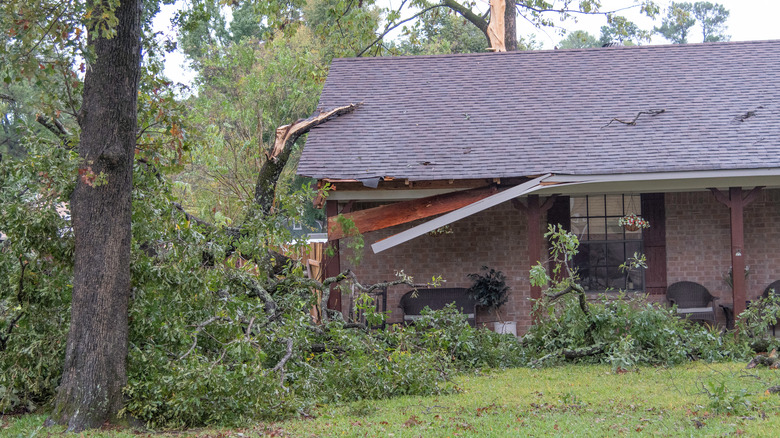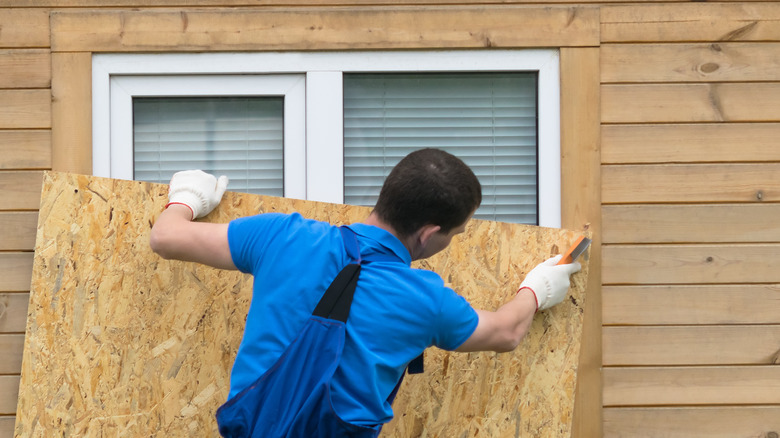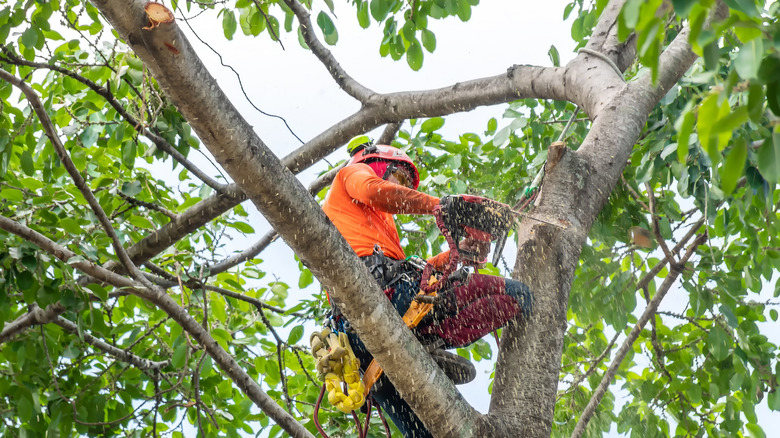Smart Storm Prep Tips To Minimize Costly Damage
Whether it's a hurricane-like storm or a thunderstorm with the risk of tornados, homeowners are right to be worried about the damage that could happen to their property, and we're not just talking about the pool toys ending up in the neighbor's yard.
Storm damage is a valid concern considering the Insurance Information Institute states that, in 2020, 45.5% of all claims from homeowners were attributed to wind and hail damage, and of those claims, the average homeowner's loss was around $11,650.
With this in mind, you may be wondering what steps you can take to shore up your home to keep the water out and your property safe from severe weather. If you have sufficient warning of an impending storm (which could be a few hours or a few days,) and enough time to prepare, there are several steps you can take that could reduce some of these risks.
Preparing your home's vulnerable structures
One of the steps the U.S. Centers for Disease Control and Prevention says to focus on is protecting vulnerable structures, like your windows and doors. It's not uncommon for fierce winds to cause branches to break off trees before launching them through the front window of your home. Glass can also shatter due to powerful wind from tornados.
If a significant storm is approaching, and only if it's safe to do so, placing plywood sheets over your windows and doors is one of the fastest and most effective ways to prepare your home. Nail or screw them to the exterior frames to provide the best level of glass protection possible — the glass is less likely to be stuck by flying debris. Don't attempt this if a storm is coming within a matter of a few minutes, though. Being outside trying to protect your home isn't advisable in dangerous weather conditions.
Additional steps to protect your home
There are some steps you can take immediately to help protect your home against future storms. FEMA recommends making changes to your home over time to make it less at risk while keeping the costs of those changes under control. One important step is to get rid of any trees that are diseased, dead, or otherwise damaged and pose a fall risk during high winds. This includes removing any dead branches that are near your home.
It's also advisable to replace gravel or any other landscaping material around the exterior of your home with a material that's fire resistant to help minimize damage from lightning strikes and to prevent fires from spreading. If you're planning to upgrade your home's windows, consider having storm shutters installed along with them, which is a far easier option for covering windows than finding plywood. Also, work to seal the exterior of your home as much as possible, thus minimizing the number of ways water can get in.


